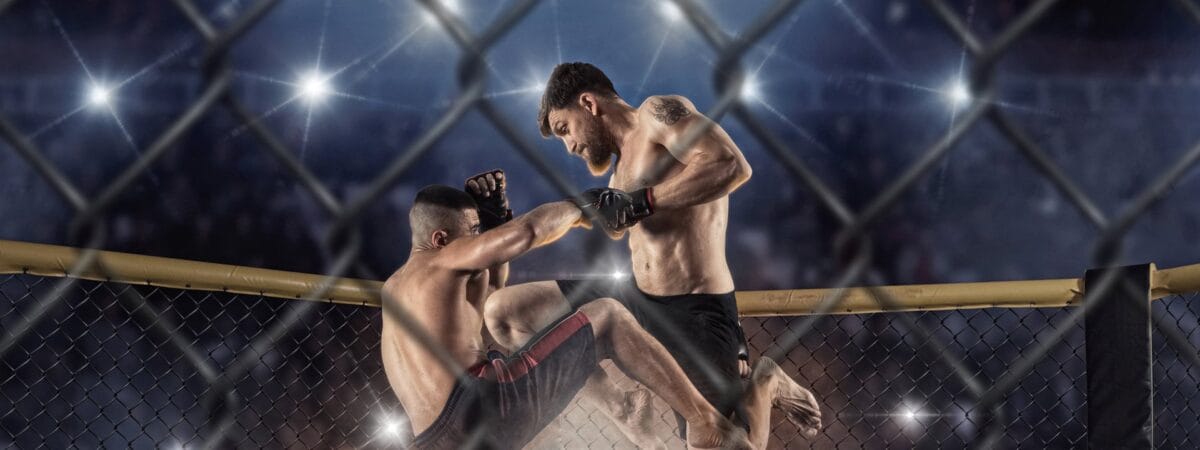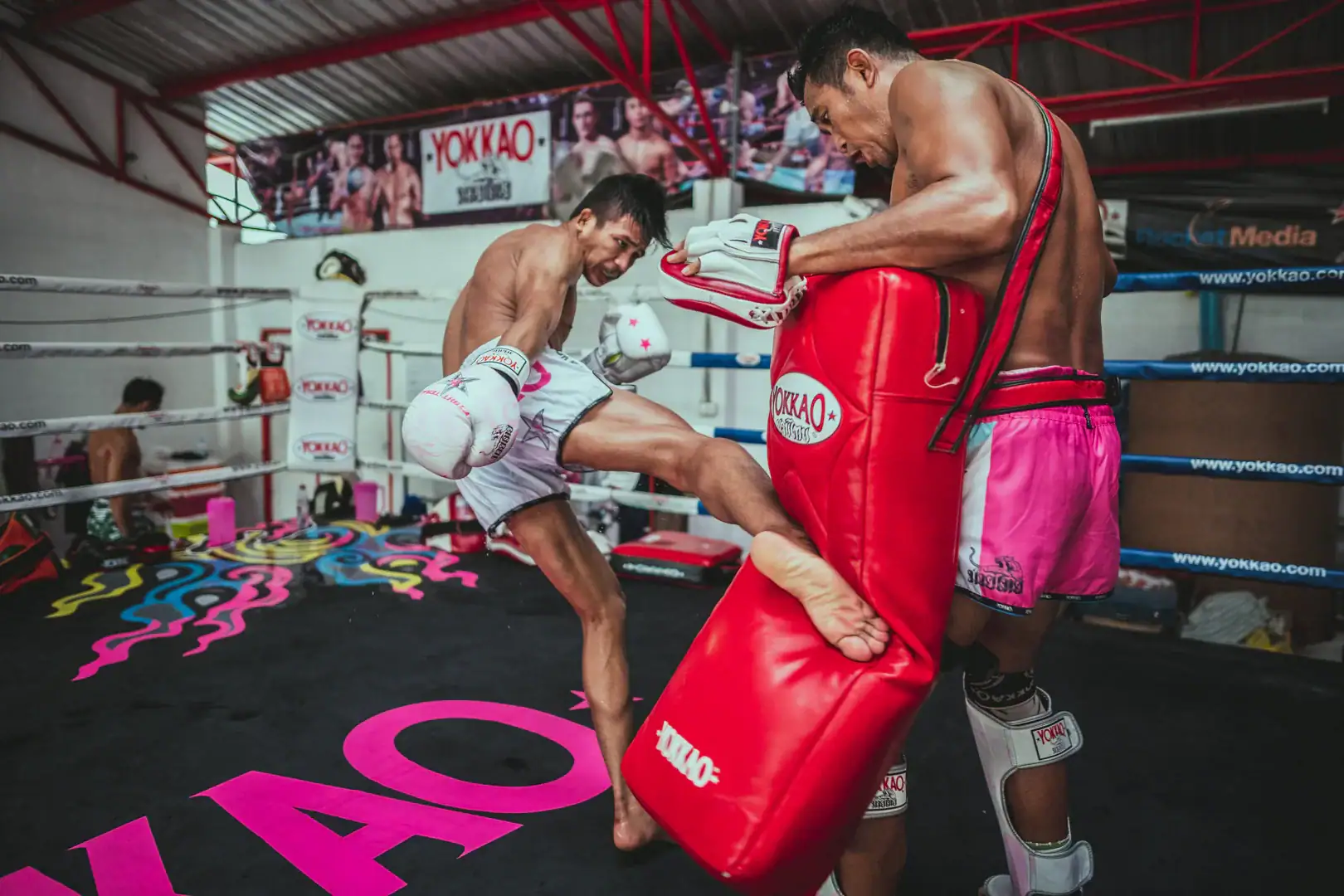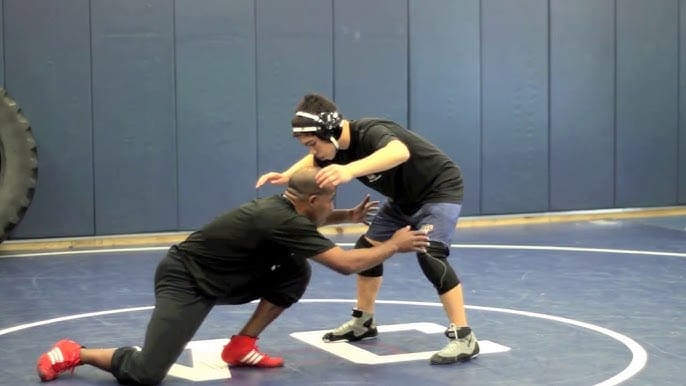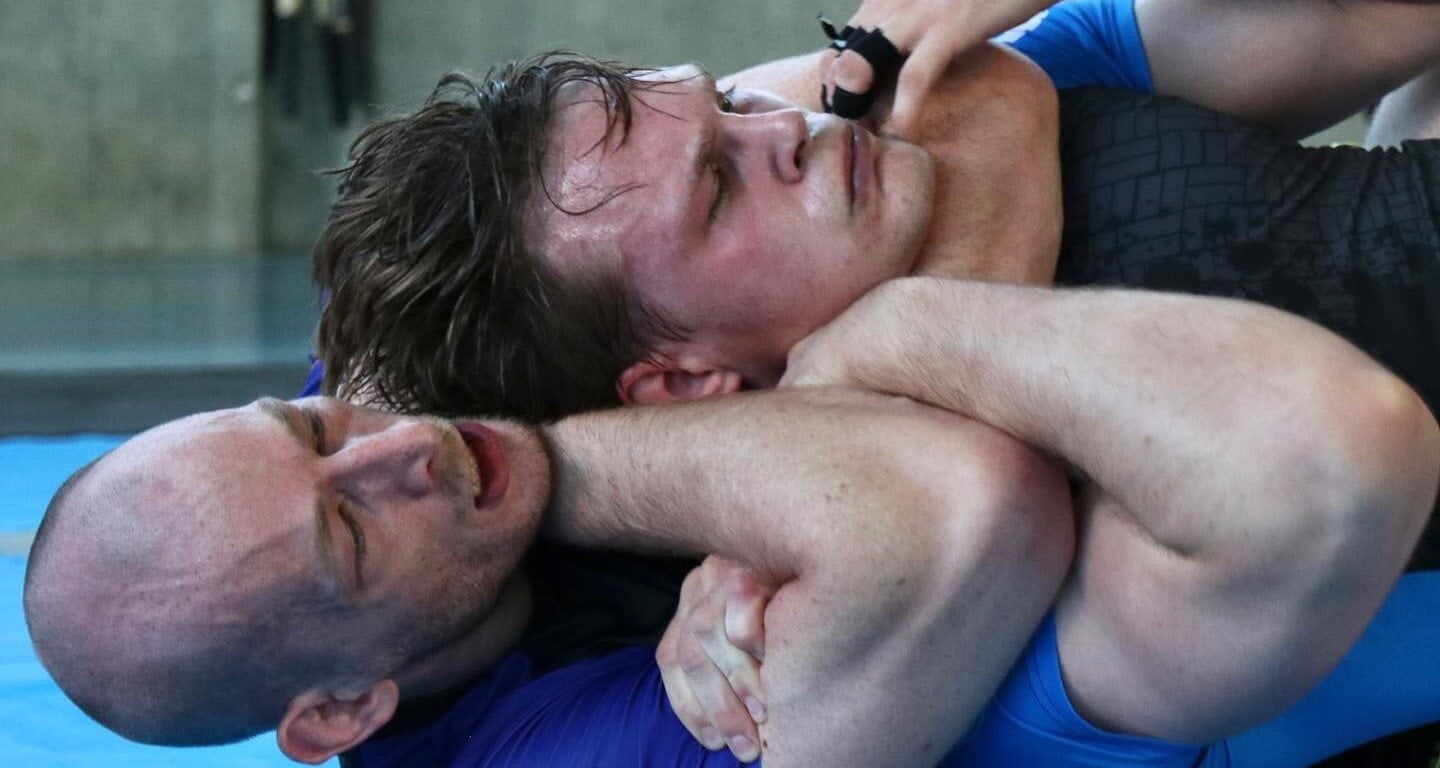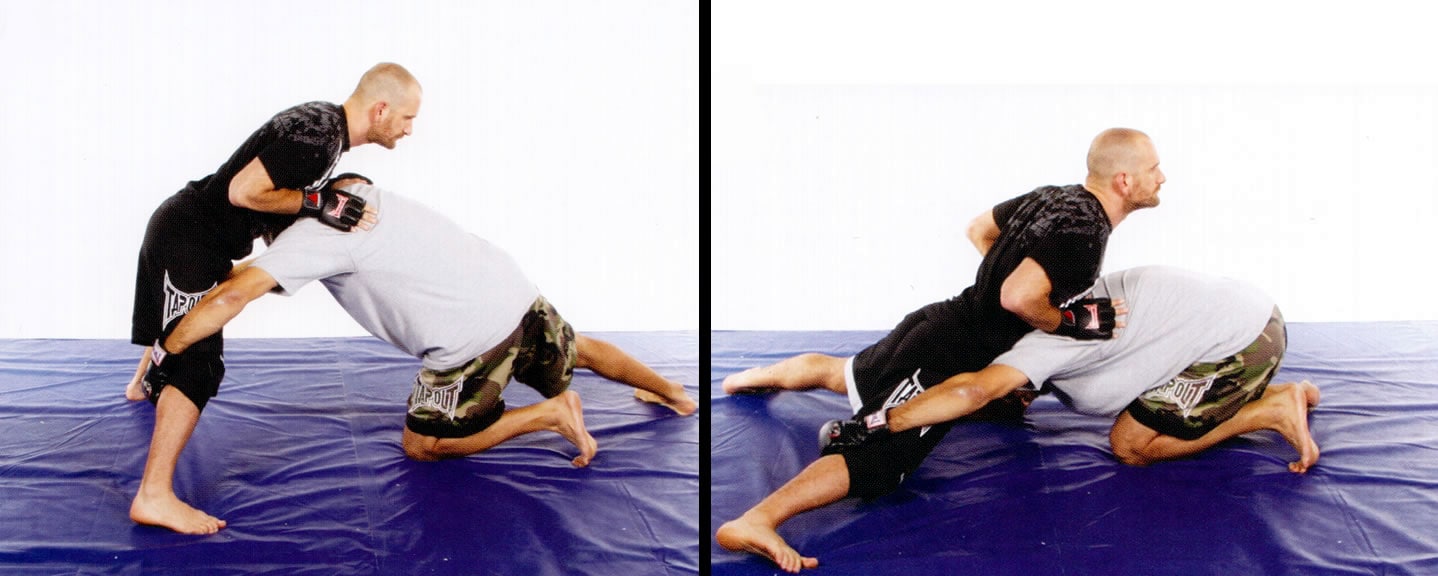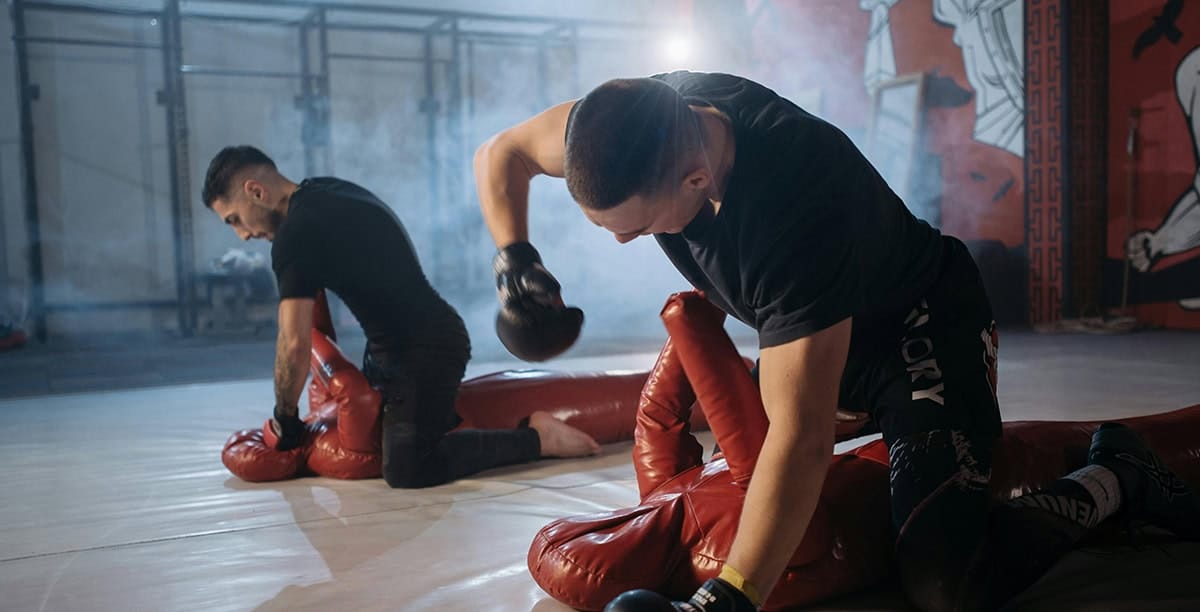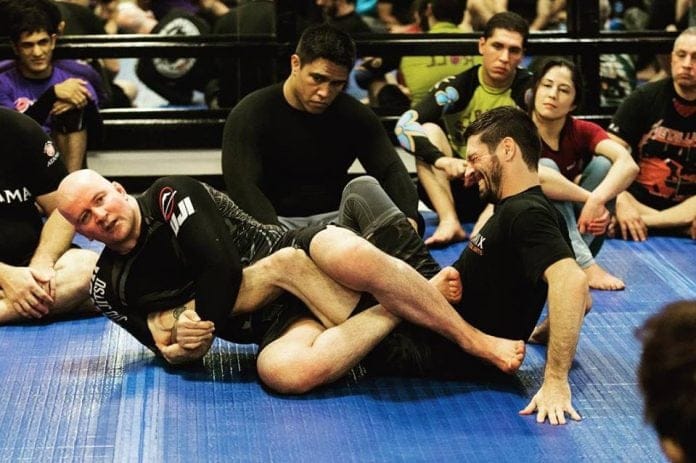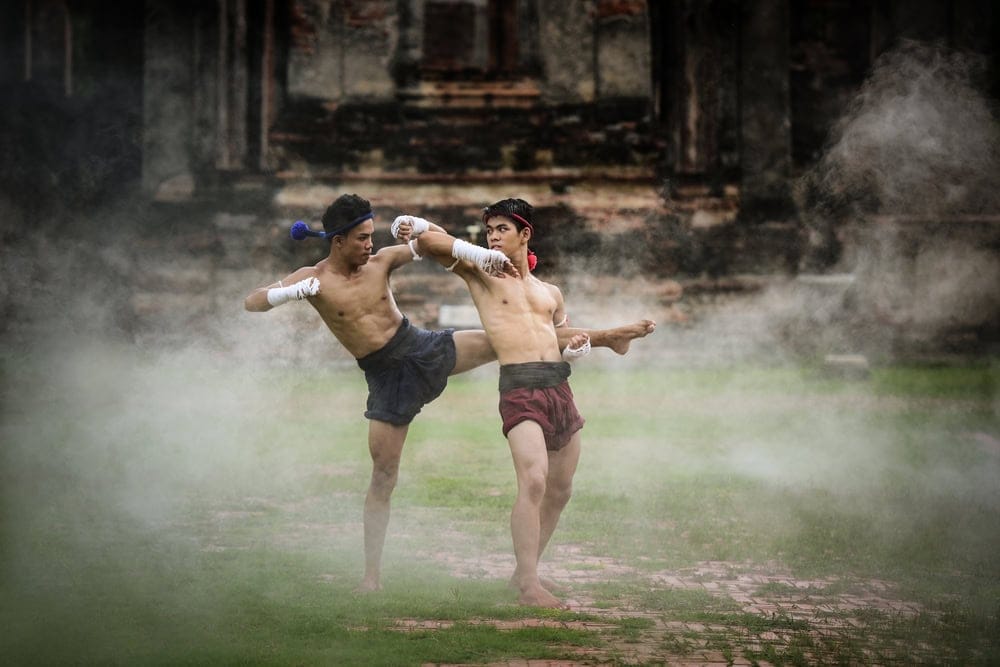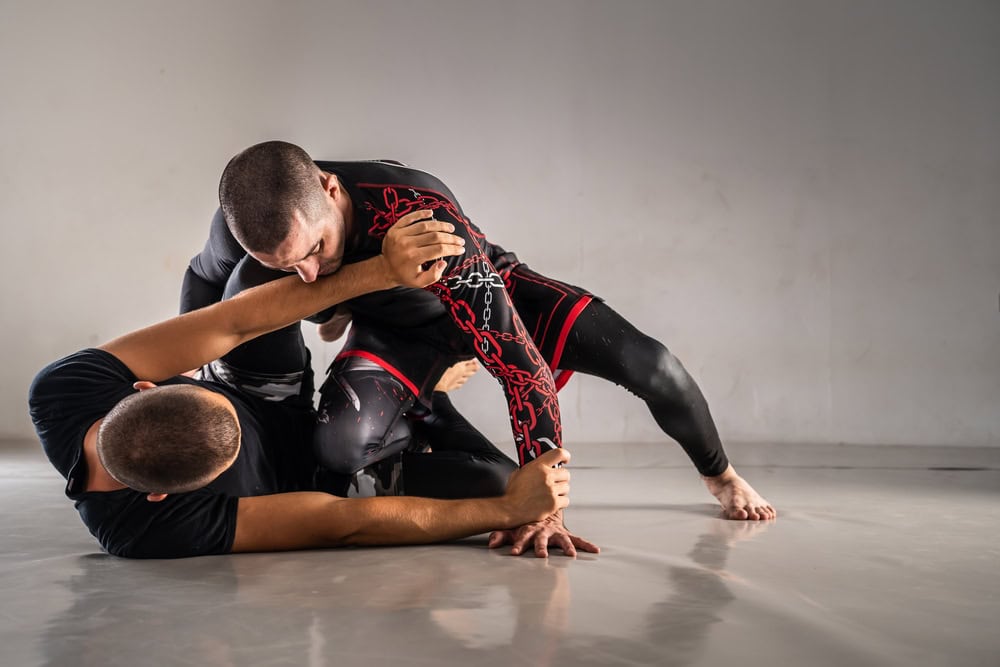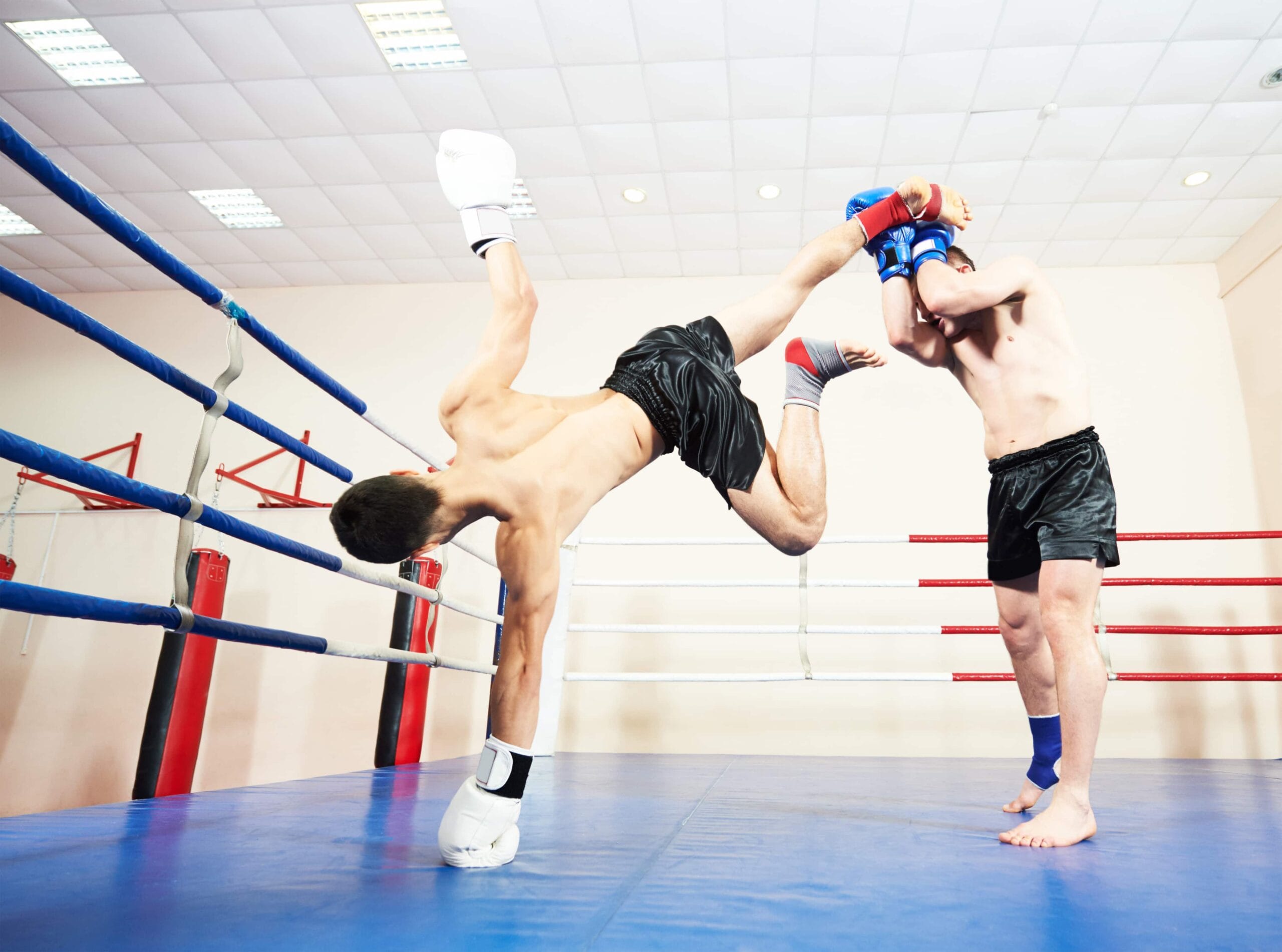The roar of the crowd crescendos as two warriors step into the cage, each armed with a diverse arsenal of striking, grappling, and submission techniques. In the world of mixed martial arts, where disciplines collide and evolve in real-time, understanding the fundamental techniques isn't just academic—it's the difference between victorious celebration and crushing defeat. Whether you're an aspiring fighter stepping onto the mats for the first time or a seasoned practitioner looking to sharpen your game, mastering these essential MMA techniques forms the foundation of every successful fighter's journey.
The beauty of MMA lies in its complexity—a chess match where physical prowess meets tactical brilliance. Every technique serves a purpose, every movement tells a story, and every fighter must become fluent in this language of combat. In the next several minutes, you'll discover the 10 fundamental techniques that separate casual practitioners from serious contenders, understand how they seamlessly flow together in the heat of battle, and gain insights that typically take years of mat time to acquire.
As someone who's spent four decades immersed in martial arts—from my teenage years in Isshin Ryu Karate to my current journey in Aikido and supplemental training in striking and Brazilian Jiu-Jitsu—I've witnessed firsthand how these techniques form the backbone of effective fighting. Today, we'll break down each technique, explore their applications, and reveal how they interconnect to create the dynamic art we call mixed martial arts.
What Makes MMA Unique Compared to Traditional Martial Arts?
Unlike traditional martial arts that often focus on a single discipline or range of combat, MMA basics demand proficiency across all fighting distances. In an MMA bout, fighters engage in full-contact competition within a controlled environment, typically a cage or a ring, where they use a combination of striking and grappling techniques to outmaneuver and defeat their opponents. This integration of multiple disciplines creates a more complete fighting system that addresses the limitations found in singular martial arts.
The sport's evolution has transformed how we view combat effectiveness. Where boxing excels in hand strikes and wrestling dominates ground control, MMA combines these with Muay Thai's devastating kicks, Brazilian Jiu-Jitsu's sophisticated submissions, and judo's powerful throws. This synthesis creates fighters who can adapt to any situation—striking when advantageous, grappling when necessary, and seamlessly transitioning between both.
What truly sets MMA apart is its emphasis on transitions and versatility. MMA's rise to fame kicked off in the late 20th and early 21st centuries, especially during the 1990s when the Ultimate Fighting Championship (UFC) made its debut. Since then, the sport has evolved from style-versus-style matchups to a refined discipline where fighters must be competent everywhere the fight goes.
Essential MMA Techniques Every Fighter Should Know
Jab (Boxing)
In my observation of countless fights—from watching Muhammad Ali's mastery in "The Rumble in the Jungle" to modern UFC battles—the jab consistently proves its worth. There are multiple purposes for the jab. One on hand, it provides a fighter with a tool for distance management and a foundation for launching combinations and attacks. On the other, it can be used defensively, whether it is pushing the opponent back with force, or flicking the lead hand out as a quick and trusted countermeasure.
Professional fighters emphasize the jab's versatility across all combat sports. The technical aspects include proper foot positioning, hip rotation, and returning the hand quickly to guard position—details that separate effective jabs from telegraphed punches. Elite coaches stress drilling proper technique for thousands of repetitions until it becomes hardwired into your nervous system.
Low Kick (Muay Thai/Kickboxing)
The Muay Thai low kick represents one of the most effective MMA moves for controlling distance and accumulating damage. Unlike flashy head kicks that often miss their mark, low kicks consistently find their target and gradually break down an opponent's mobility and will.
UFC superstar Conor McGregor learned this lesson painfully when "The Notorious" was butchered by a blitz of expertly placed low kicks by Dustin Poirier in their rematch at UFC 257, highlighting the effectiveness of this valuable weapon in MMA. This fight perfectly illustrated how low kicks can neutralize even elite strikers.
The mechanics involve turning the hip over completely, making contact with the shin rather than the foot, and targeting the thigh's meaty portion or the knee joint. When executed properly, these kicks compromise an opponent's stance, slow their movement, and create openings for follow-up attacks. Many fights have been won through the cumulative effect of well-placed low kicks.
Double-Leg Takedown (Wrestling)
Wrestling forms the backbone of MMA control, and the double-leg takedown exemplifies this perfectly. The double leg takedown is perhaps one of the most commonly used takedowns in not just BJJ, MMA but also in most grappling martial art. Not only is it a straightforward technique to perform, but it also has the highest success rates of almost all takedowns.
The technique requires explosive power, proper level changing, and precise timing. The double leg takedown (colloquially known as a double leg or double) involves grabbing the opponent with both arms around the opponent's legs while keeping the chest close to the opponent, and using this position to force the opponent to the ground. When I watch elite wrestlers like Khabib Nurmagomedov or Daniel Cormier execute this technique, it's poetry in motion—their opponents seem helpless against the perfect blend of technique and timing.
Jordan Burroughs, an Olympic gold medalist wrestler, emphasizes the importance of repetition: "Repetition is Key." Consistency in practice will refine your technique. Khabib Nurmagomedov This dedication to drilling fundamentals separates successful takedown artists from those who struggle to get fights to the ground.
Rear Naked Choke (Brazilian Jiu-Jitsu)
Among all submission holds in MMA, the rear naked choke reigns supreme as the most reliable fight-ender. The rear naked choke is one of BJJ's signature techniques. It requires little strength to apply, and is effective on opponents of all sizes, making it a great submission for smaller grapplers.
The choke's effectiveness stems from its anatomical advantage. As is the case with all effective submissions, the rear naked choke creates an anatomical mismatch. Specifically, it pits one person's arms against another person's neck. However, as opposed to other parts of the body, the neck is uniquely vulnerable to attack. Once properly applied, escape becomes virtually impossible.
In my years watching MMA, from UFC 1 through today's events, I've seen countless fights end with this technique. Once a rear naked choke is fully locked in, there is virtually no way to defend it. The beauty lies in its simplicity—control the back, secure the neck, and apply gradual pressure until the opponent submits or loses consciousness.
Sprawl (Takedown Defense)
Defense wins championships, and in MMA, the sprawl represents the first line of defense against takedowns. A "sprawl" is a defensive technique used to escape takedown attempts. It is commonly used in mixed martial arts and grappling-based combat styles such as Brazilian Jiu-Jitsu and wrestling.
The technique involves explosive hip movement backward while driving weight down onto the opponent's upper body. When the opponent goes for a leg takedown, move your hips back as you swing your legs away from your opponent while reaching for their head with your hands. I've seen fighters like Chuck Liddell and Jose Aldo build entire careers on exceptional sprawl timing, keeping fights standing where they held the advantage.
Former two-division UFC champion Daniel Cormier notes the critical nature of defensive wrestling: "Defending a head inside single [leg takedown] by sprawling and scoring will happen when your opponent attacks your leg," Division I coach and former collegiate wrestler Kyle Borshoff says. "You will then have an opportunity to sprawl and score."
Ground and Pound (Top Control Striking)
Ground and pound epitomizes MMA's unique ruleset, allowing strikes to grounded opponents. This technique transforms wrestling control into devastating offense. Mark Coleman is the man credited with coining the term ground and pound and is considered one of the early exponents of this style.
The evolution of this technique fascinates me, having watched it develop from Coleman's rudimentary approach to the sophisticated systems used today. Current UFC heavyweight Curtis Blaydes has a ground and pound attack, like Nurmagomedov, that is based on controlling his opponent's limbs in particular ways that create openings for ground strikes. Khabib Nurmagomedov perfected this art, using technique rather than brute force to inflict damage.
Proper ground and pound requires maintaining position while creating angles for strikes. Tito Ortiz, a former UFC light heavyweight champion, understood that the key to staying safe inside the guard was the ability to control the guard player's hips, rather than his head and shoulders—something Coleman's era hadn't fully grasped. This understanding of positioning separates effective ground strikers from those who gas out quickly without causing significant damage.
Leg Lock (BJJ/Submission Grappling)
Leg locks have revolutionized modern grappling, transforming from frowned-upon techniques to essential weapons. Leg locks have exploded in popularity over the last several years in competitive grappling. Although leg locks were once shunned by the BJJ community, their effectiveness has never been in doubt.
The heel hook, in particular, has become a game-changer. No list of BJJ leg locks would be complete without the heel hook. The heel hook has a controversial history in BJJ, as it was disfavored in BJJ for many years. However, given the success that many top grapplers have had with heel hooks in recent years, it has gradually gained acceptance within the BJJ community.
John Danaher's revolutionary leg lock system has transformed modern grappling, producing numerous champions and proving these techniques' effectiveness at the highest levels. His "Death Squad" group has dominated submission grappling competitions, with athletes like Gordon Ryan and Craig Jones becoming household names in the BJJ community through their mastery of heel hooks and other leg attacks. This systematic approach to leg entanglements has forever changed how fighters view lower body submissions.
Elbows from the Clinch (Muay Thai)
Thai boxing's contribution to MMA extends beyond kicks to devastating close-range weapons—elbows. Elbows are one of the weapons that are unique to Muay Thai. Most striking-based martial arts tend to be restrictive regarding the weapons you are allowed to attack with.
In the clinch, elbows become particularly dangerous. When I witnessed Anderson Silva's clinical use of clinch elbows against Rich Franklin, it demonstrated how traditional Muay Thai techniques translate perfectly to MMA. The key lies in controlling an opponent's posture while creating the angle and distance necessary for elbow strikes.
Multiple-time Muay Thai World Champion Orono Wor Petchpun's downward elbow strike KO’d his opponent from the clinch. Orono kept his body as close to his opponent as possible, controlling his opponent's arms to gain a better clinch position. This control-first approach ensures the technique's effectiveness while minimizing counter opportunities.
Cage Control (Wall Work/Wrestling)
The cage itself becomes a weapon in MMA, and understanding how to use it separates good fighters from great ones. "Most people use the cage wrong in MMA," Ben Askren. "What I think about the cage is that it is like a third leg. People who are smart use the cage defensively to make it easy not to get taken down."
Randy Couture built his Hall of Fame career on exceptional cage wrestling, using the fence to exhaust opponents before securing takedowns. His years of experience as a Greco-Roman wrestler allowed him to pin opponents against the cage and drain their energy until they had nothing left in the tank.
Effective cage work involves understanding underhooks, maintaining proper posture, and recognizing when to strike versus when to control. During my years watching MMA evolve, I've seen cage control become increasingly sophisticated, with fighters using it for both offensive and defensive purposes.
Hip Escape (Shrimping - BJJ)
The hip escape, commonly called "shrimping," represents the fundamental defensive movement in ground fighting. Everyone says that moving your hips is one of the keys to jiu-jitsu. And they're absolutely right: the correct movement of the hips is critical not only for escaping bad positions, but also for applying submissions, sweeping your opponent, passing the guard and much more.
Having trained in various grappling arts, I can attest that proper hip movement separates recreational practitioners from serious competitors. Shrimping is about more than just escaping from bad situations. It is a method of increasing your mobility on the ground, and if you're mobile, the possibilities of what you can do increase exponentially.
Saulo Ribeiro, a multiple-time world champion, emphasizes its importance: "Shrimping is the first move I teach my students. Without a good understanding of how to move your hips and create space, it is difficult to progress in Jiu Jitsu." This fundamental movement enables escapes, creates angles for attacks, and forms the basis for advanced ground techniques.
How These Techniques Work Together in Real Fights
Understanding individual techniques is just the beginning—the magic happens when they flow together seamlessly. Picture a fight where a boxer's jab sets up a takedown attempt, which gets stuffed by a sprawl, leading to a clinch where elbows and knees come into play. This is the beautiful chaos of MMA.
In my decades of watching combat sports, from Foreman-Frazier to modern UFC championship bouts, I've noticed that champions excel at chaining techniques together. They use the jab to measure distance for low kicks, low kicks to set up takedowns, and takedowns to hunt for submissions. Each technique creates opportunities for the next, forming an endless loop of offensive possibilities.
The most successful fighters understand this interconnectedness. They don't think in terms of individual moves but rather in sequences and combinations. A failed takedown becomes an opportunity for a guillotine choke, a blocked kick transforms into a clinch entry, and a defended submission opens up striking opportunities.
The Importance of Transitions in MMA
Transitions separate good MMA fighters from great ones. The moments between techniques—when a fight moves from standing to ground, from striking to grappling—often determine victory or defeat. These transitional phases require split-second decision-making and muscle memory developed through thousands of repetitions.
Consider how a wrestler shoots for a takedown: if successful, they must immediately transition to maintaining top control and potentially hunting for submissions. If unsuccessful, they must quickly transition to defensive positions to avoid guillotines or knees. This constant state of transition defines modern MMA.
My experience watching fighters like Demetrious Johnson and Jon Jones has shown me that mastery of transitions creates opportunities that others miss. They see openings where others see obstacles, turning defensive positions into offensive opportunities through superior transitional awareness.
Defense Is a Technique Too: How Fighters Avoid Damage
While offensive techniques capture highlight reels, defensive mastery wins championships. Every offensive technique has a defensive counter, and understanding both sides of each exchange is crucial for MMA success. Head movement counters jabs, checking prevents low kicks, sprawling stuffs takedowns, and proper hand positioning defends against chokes.
The best defenders in MMA—fighters like Anderson Silva in his prime or former champion Israel Adesanya—make defense look effortless. They slip punches by millimeters, check kicks instinctively, and sprawl with perfect timing. This defensive excellence allows them to counter effectively, turning their opponent's aggression against them.
In my martial arts journey, I've learned that defense isn't passive—it's an active skill requiring as much practice as offense. The old boxing adage "hit and don't get hit" applies perfectly to MMA, where taking unnecessary damage shortens careers and limits potential.
Fight IQ and Tactical Application of Techniques
Raw technique without intelligence is like having a loaded gun without knowing how to aim. Fight IQ—the ability to read opponents, adapt strategies mid-fight, and make split-second tactical decisions—elevates good technique to championship level. You will need the right balance and execution to keep your opponent where he is or to maneuver him where you want him to go.
Watching cerebral fighters like Georges St-Pierre taught me that victory often comes from outthinking rather than outmuscling opponents. They identify patterns, exploit weaknesses, and adjust their game plans in real-time. This mental aspect of fighting transforms techniques from mere movements into strategic weapons.
High fight IQ manifests in knowing when to engage versus when to reset, recognizing which techniques work against specific opponents, and understanding how fatigue affects both fighters as rounds progress. It's the difference between throwing techniques hoping something lands and systematically breaking down an opponent's defenses.
How Training Styles Affect Technique Use
Your training environment profoundly impacts how you apply techniques in competition. Fighters from wrestling-heavy camps like American Top Team often display superior cage control and ground dominance, while those from striking-focused gyms like Tiger Muay Thai excel in distance management and striking combinations.
Throughout my martial arts journey—from Isshin Ryu Karate with its emphasis on linear strikes to Aikido's circular movements and redirection—I've experienced how different training methodologies shape technique application. Brazilian Jiu-Jitsu gyms that emphasize sport grappling produce different fighters than those focused on MMA-specific training.
The most complete fighters often cross-train at multiple gyms, absorbing different philosophies and training methods. They understand that techniques must be adapted for MMA's unique ruleset and environment, modifying traditional martial arts movements to account for strikes, takedowns, and the cage.
Final Thoughts on Essential MMA Techniques and How they Shape the Fight:
These ten essential techniques form the foundation of every successful MMA fighter's arsenal. From the simple yet effective jab to the complex chess match of ground positioning, each technique serves a crucial purpose in the grand tapestry of mixed martial arts. The beauty of MMA lies not in mastering every possible technique but in understanding how these fundamentals connect, transition, and complement each other.
As someone who's spent four decades studying various martial arts, I can tell you that the journey never truly ends. Whether you're just beginning your MMA training for beginners or you're a seasoned practitioner refining your craft, focusing on these fundamentals will always yield improvements. Remember, even champions return to basics—they just execute them with a precision that comes from countless hours of deliberate practice.
The landscape of MMA continues to evolve, with new strategies and techniques emerging regularly. Yet these ten fundamentals remain constant, proving their effectiveness across generations of fighters. Master these, understand their connections, and you'll possess the tools needed to adapt to any situation the cage presents.
What has been your experience with martial arts training? Are you considering starting MMA, or have you already begun your journey? Which of these techniques do you find most challenging or interesting? Share your thoughts and questions in the comments below!

Frequently Asked Questions
What is the most effective technique in MMA?
There's no single "most effective" technique in MMA since success depends on timing, setup, and individual expertise. However, the jab and sprawl are arguably the most fundamental, as they form the basis for offense and defense respectively. The rear naked choke has the highest submission finish rate.
How do fighters train for all these techniques at once?
Fighters typically follow periodized training programs, focusing on different aspects throughout the week. They might dedicate specific days to wrestling, striking, and BJJ, with MMA-specific sessions that blend all disciplines. Most professionals train 2-3 times daily, combining technique work with conditioning.
Do all MMA fighters use the same techniques?
While all fighters should know these fundamentals, each athlete develops a unique style based on their background, body type, and preferences. A wrestler might emphasize takedowns and ground control, while a striker might focus on distance management and defensive wrestling.
Can traditional martial arts techniques work in MMA?
Absolutely. Many traditional techniques prove effective when adapted for MMA's ruleset. The key is modifying them to account for the threats MMA presents—takedowns, ground fighting, and strikes from all ranges. Fighters like Lyoto Machida successfully adapted karate, while others have incorporated taekwondo and kung fu elements.
What's the hardest MMA technique to master?
Timing-based techniques like the sprawl and counter-striking often prove most challenging because they require split-second reactions. Additionally, cage wrestling demands years to master due to its unique environment. For most beginners, consistent hip movement and defensive positioning take the longest to develop.
Are flashy techniques like spinning kicks or flying submissions useful?
While less percentage-based than fundamentals, these techniques have their place. They work best when an opponent doesn't expect them or when used to set up more basic attacks. However, fighters should master fundamentals before attempting advanced techniques.
How can I improve my MMA?
Focus on consistent training in all aspects—striking, grappling, and conditioning. Drill fundamentals daily, spar regularly with partners of varying skill levels, and analyze both your own performance and professional fights. Remember, small improvements in basics yield bigger results than learning new flashy techniques.

